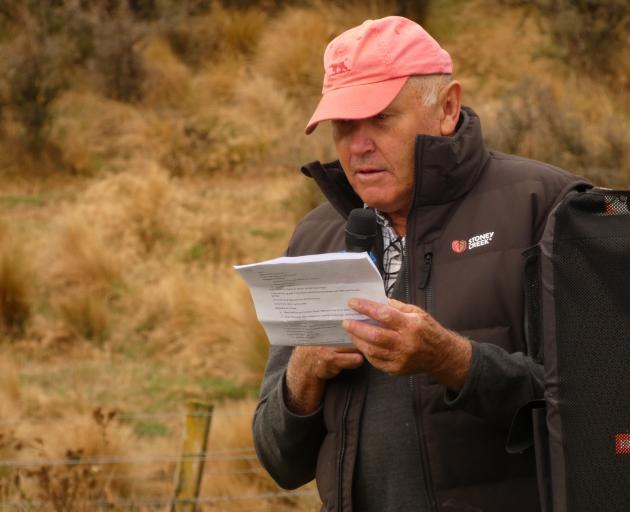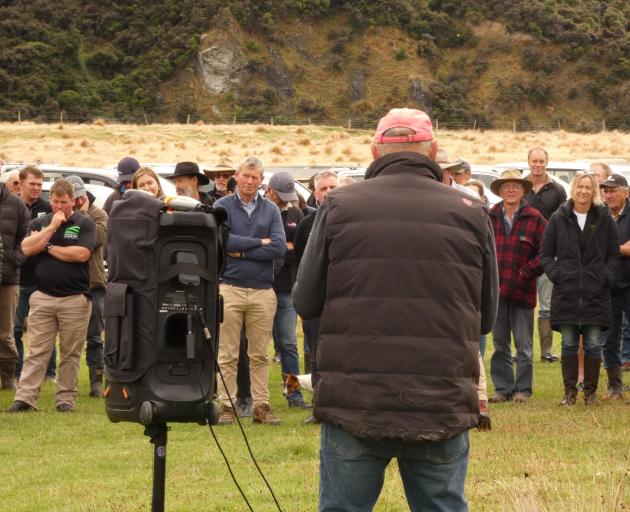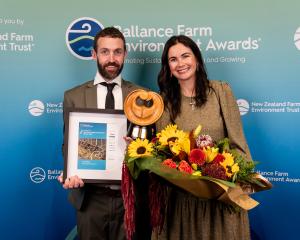
About 230 farmers and industry people in 70 four-wheel-drive farm vehicles crossed the back country track on Glens of Tekoa Station through to The Grampians and Lochiel Station.
Among them were politicians Chris Hipkins, Andrew Hoggard, Jo Luxton, Steve Abel, Grant McCallum and Stuart Smith.
At the first stop at Glenrae Hut, Glens of Tekoa owner Beau McRae outlined early farming in the Amuri area and The Grampians owner Graham Reed spoke on more recent times.
The McRae family has a long history at Glens of Tekoa, firstly taken up by William McRae, with the first house built with cob walls in 1859.

"It would have been a big day for the agents. These sheep had come down from Marlborough where there had been a drought. They had the new railway up to Culverden and apparently all the buyers came up on the train and the publican did very well that day. The reason they were coming to buy the sheep was because the merino ewes were sought after for the halfbred to fit the frozen meat trade which was just getting going."
He said large landowners were known then as the Amuri wool kings.
"The Amuri County Council in 1981 adopted the merino ram’s head and today that could be a dairy cow. Back in 1850 the first sheep from the Wairau came down through the Hill’s Gates ... and down through Molesworth ... to the Clarence and they had to burn ahead of them the ‘Wild Irishman’ which is what we call matagouri and the [needle-sharp golden] Spaniards."
A young Theophilus Samuel Mannering was left to look after the flock for 18 months, with shorn wool stored in a cave, while they waited for a road to go through Weka Pass.

In the same decade, Alphonso Clifford set off with 700 wethers from Flaxbourne Station, coming unstuck when it snowed on St James.
More sheep arrived when George Rutherford came from Australia, commissioning a boat for over 100 sheep, a dozen bullocks and a horse.
Mr McRae said the Glens of Tekoa sheep today producing 19 micron fleece were "well nourished"with the property normally receiving 890 millimetres of rainfall - and some years double - with snow landing in the winter.
"In the 1992 snow we had two feet around here for two weeks and we snow raked the ewes [out]. The wethers had to wait their turn and we had 50 people here snow raking that week.
"I’ve always been very grateful for all those people."

"But it must be viable economically. In my farming career anyway it’s the wool cheque which has kept us going."
He said Amuri was mainly fine-wooled sheep and beef cattle 50 years ago.
"Now it’s mostly strong wool composites and dairy cattle largely due to the advent of irrigation. Some stayed with fine wool and a few either stayed or went back to the merino genetics getting more and better wool.
"With development and fertiliser largely from the late 1970s growing lots of grass and clover came an influx of footrot and worms."
He said their number one topic of conversation 30 years ago was probably footrot and trying to cure it.

"This prove an absolute game-changer for both our properties. Huge improvement was apparent within five years and it just started improving.
"Neither property now treats footrot at all. We’re now the lame ones, not the sheep."
Mr Reed said there had been rapid progress in breeding much easier care merinos.
"With the good demand for apparel wools largely driven by the leisure and active sportswear market hopefully there will be demand for our wools for a while yet and let’s hope they’re worth shearing for many years to come."















